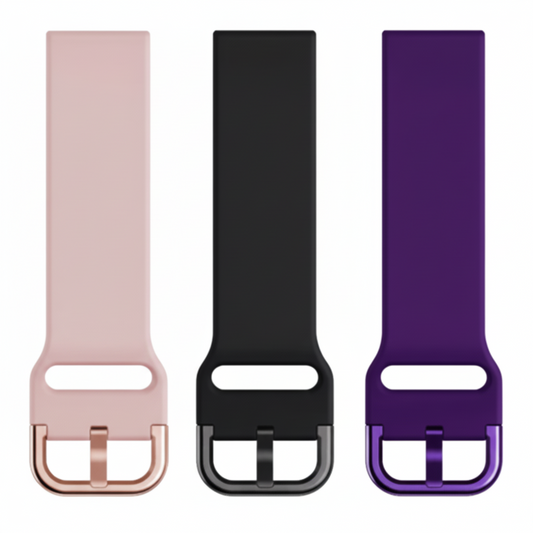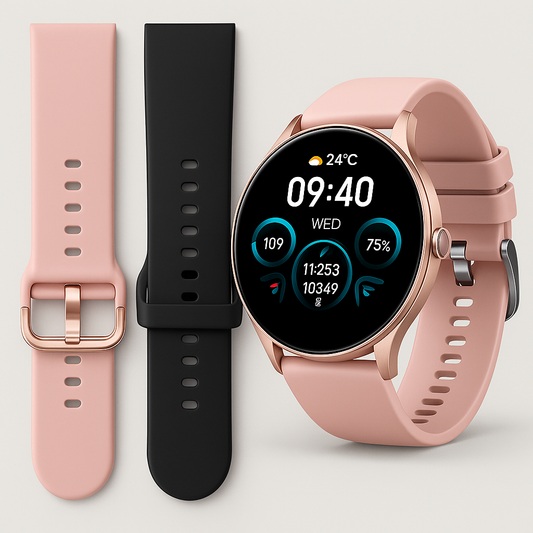In recent years, monitoring blood oxygen levels has become more common, especially with the rise of smartwatches and wearable devices that make it easy. However, many people still don’t fully understand why it’s so important to track this vital health indicator.
In this article, we’ll explain what blood oxygen levels are, why it’s crucial to keep them within healthy ranges, and how technology can help you monitor them effectively.
What Are Blood Oxygen Levels?
Blood oxygen levels refer to the amount of oxygen circulating in your bloodstream, which is essential for the proper functioning of your organs and tissues. Oxygen is carried from the lungs to the rest of the body by red blood cells, and without an adequate amount, your organs cannot function optimally.
Oxygen saturation, or SpO2, is the term used to describe how much oxygen your blood is carrying. It’s measured as a percentage, with normal levels typically ranging between 95% and 100%.
Why Is It Important to Measure?
Maintaining adequate blood oxygen levels is critical for your body’s proper function. If oxygen levels fall below normal, the body can be deprived of oxygen, leading to hypoxemia. This can have serious health consequences, such as:
- Respiratory issues: Low blood oxygen levels are often linked to lung conditions such as asthma, chronic obstructive pulmonary disease (COPD), and pneumonia. Detecting low oxygen saturation early can be key to getting timely treatment.
- Heart conditions: Low oxygen levels can also signal heart problems, as the heart needs sufficient oxygen to pump blood efficiently. Without enough oxygen, this can lead to complications like heart failure.
- Chronic diseases: For people living with chronic conditions such as sleep apnea, it’s crucial to monitor oxygen levels regularly. A sudden drop in oxygen during the night can trigger severe complications if not addressed in time.
- Early disease detection: Measuring blood oxygen can also help identify serious respiratory infections (like COVID-19) before symptoms worsen. A low SpO2 level may be one of the first signs that your lungs aren’t functioning properly.
- Physical activity monitoring: Those who exercise, particularly high-intensity sports or activities at high altitudes, can benefit from monitoring their blood oxygen levels. Keeping oxygen levels within a healthy range during exercise ensures that your body is getting the oxygen it needs to sustain physical effort.
How Is Blood Oxygen Measured?
Traditionally, blood oxygen levels are measured using a device called a pulse oximeter. This non-invasive device is placed on your fingertip and uses light beams to determine how much oxygen is in your blood.
Today, with advances in technology, many smartwatches and wearable devices include sensors to measure blood oxygen saturation quickly and conveniently. These devices allow you to check your SpO2 at any time, making it especially useful for those with pre-existing conditions or people who want to track their fitness performance.
What Are Healthy Blood Oxygen Levels?
Generally, a blood oxygen saturation level between 95% and 100% is considered healthy. However, some factors can affect this level:
- High altitude: In areas with less oxygen in the air, it’s normal for saturation levels to drop slightly, but they typically should not fall below 90%.
- Respiratory diseases: People with chronic lung conditions may have lower-than-usual oxygen levels and might require supplemental oxygen.
If blood oxygen levels drop below 90%, this is considered hypoxemia, which may require medical attention.
How Can a Smartwatch Help?
A smartwatch with a blood oxygen monitoring feature can be a valuable tool for keeping track of your health continuously. These devices offer several benefits, including:
- Real-time monitoring: Smartwatches allow you to measure oxygen saturation instantly, helping you stay informed about your levels at any time of day.
- Custom alerts: Many devices can send alerts if dangerously low oxygen levels are detected, giving you time to act before symptoms worsen.
- Long-term tracking: The data collected by your smartwatch enables you to monitor your oxygen levels over time, which can be helpful in identifying patterns or changes that may indicate a health issue.
- Ideal for active individuals: If you engage in sports or physical activities, a smartwatch can help you monitor how your body responds to exertion and ensure you’re getting enough oxygen for optimal performance.
Measuring your blood oxygen level is a key tool for keeping your health in check, especially if you have respiratory or heart conditions, or if you enjoy physical activities. Advances in technology, like smartwatches, have made this monitoring more accessible than ever, allowing you to stay on top of your well-being easily and efficiently.
At SmartPulse Store, we offer smartwatches that not only help you measure your oxygen levels but also provide comprehensive control over your daily health. Discover how technology can improve your life and keep you in top health!





